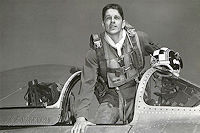 How the shootdown of a U-2 spyplane over Cuba by a Soviet surface-to-air missile nearly led to nuclear war
How the shootdown of a U-2 spyplane over Cuba by a Soviet surface-to-air missile nearly led to nuclear war
By Michael J. Tougias @ Aviation History Magazine
On Friday, October 26, 1962, one day before “Black Saturday,” the most terrifying day of the Cuban Missile Crisis, CIA Director John McCone gave President John F. Kennedy more bad news about the Soviet military build-up on the island. He explained that the Soviets were spending an estimated $1 billion on their military installations and that “rapid construction activity” was continuing. More alarming was the discovery of a Soviet FROG-7 missile launch system (also referred to as a Luna-M), a tactical nuclear weapon that could be used against an American invasion or the U.S. outpost at Guantanamo Bay.
This information prompted Strategic Air Command (SAC) to authorize a Lockheed U-2 reconnaissance flight over Cuba for October 27. U.S. Air Force U-2s and Navy Vought RF-8 Crusaders had been used extensively in the prior days to photograph medium-range ballistic missile sites, SA-2 surface-to-air missile (SAM) sites and a variety of Soviet military installations and troop barracks. While the Crusaders were used for the low-level surveillance and close-up photographs, the high-flying U-2s could cover a much broader area with their high-resolution cameras.

